This is the third article in the Where We Came From series.
“When I was 12 years old, I picked up a medical encyclopaedia and it told me, in unequivocal terms, that people with CF die by 13. So I had my middle-age crisis real fast, and every year since about 15 or so feels like getting extra balls on a pinball machine.”
1982. While the British belt out Come on Eileen like a football anthem, across the pond, the Atari Program Exchange releases a small game about a salmon swimming upriver. It’s an unassuming début for someone who would one day be referred to as the “Stanley Kubrick of game design”. But Bill Williams, who always feels like he is living on borrowed time, learns fast.
1983. Synapse Software release Necromancer, Williams’ masterwork on the Atari 400/800, a shining example of artistic reach in the home computing era.
A restless tree stands alone as soft music rises out of the darkness. The music grows bolder, daring the player to cross the border between the safety of this place and the danger of play.
You press the trigger.
The Forest
“I tried really hard to make an interesting mistake. And then I developed the mistake.”
Your journey begins in the forest where you must grow an army of magical trees. But the other denizens of the forest do not take kindly to your magical meddling and you’ll spend most of your time protecting your fledgling army from attack. Resident ogres will crush young trees underfoot whilst adult trees fear only the forest spider, whose poison will reduce them to stumps… unless you cure them in time with a flick of your wisp.
Most activities reduce your strength – planting seeds, zapping ogres – and you might expect that losing all your strength would be the end of the game. Not so here. If your strength runs out, you move on to the next stage.
This in place, Williams throws you an incredible curveball: do too well and you will suffer. Amassing trees pumps up the skill level. At level five, raising new trees to adulthood is almost impossible and you’re constantly chasing the forest spider, who can now kill a whole crop of trees in the blink of an eye.
You are no longer praying to survive, but praying to lose.
“When I die, it’s not going to be a tragedy. It’s going to be a release… it’s Bill finally being able to set down a weight that’s gotten very, very heavy.”
The Vaults
1984. Williams makes only $600 on Alley Cat, an original and acclaimed Atari title with a sense of humour. In the same year, he gets to play with a prototype of the Commodore Amiga – and leaves Atari behind.
1986. Commodore publishes Mind Walker, Williams’ first title for the Amiga. The manual describes it as follows: “you wander in the wasteland of your internal world, first in the Mind, then in the Brain and, ultimately, in the Subconscious, trying to find and piece together your precious Shards of Sanity.” Over the next five years, he follows up with Sinbad and the Throne of the Falcon for Cinemaware, The Pioneer Plague for Terrific Software and Knights of the Crystallion for U.S. Gold. Throughout, Williams’ signature flair for the original and strange is in evidence.
“I had this awful fear that, unless I worked really hard, it would be impossible for me to produce anything but time-wasters. I demanded from every one of them [my games] that, as much as possible, they be in some way drawing the person forward so they were acquiring something, they were growing somewhere, they weren’t just killing time.”
The blind panic of Necromancer’s forest makes way for the tension and dread of the vaults, home to forty spider larvae. Your plan is to obliterate as many larvae as possible.
Now each larva is well-protected in its own stone vault and something powerful is needed to break in. Your trees are the key. If you place a tree atop the roof of a vault, it will slowly burrow its roots through the stone. In time, the roof will collapse and the tree will fall through, crushing the larva beneath.
Although the “hands of fate” that grab from above are dangerous, you should be more worried about the larvae as these babies are getting ready to hatch. Once you see one flashing, it’s about to pop. Pray to God you can crush it with a tree in time because a hatched spider is a lethal, spitting nightmare that also kills trees with shocking efficiency. And if your strength runs out here, it’s game over for real.
Once again, Williams has seen fit to inflict a cruel twist of diminishing returns on you. Each successive vault level is faster than the previous one and dropping trees onto larvae in the bottommost vault will cost you dearly in both trees and strength. Now, every tree that survives the descent through the vaults will boost your strength but every larva that survives will come back to haunt you as a fully-grown spider in the final showdown.
And so, as in the forest, Necromancer is about managing risk. How far are you willing to go?
The Graveyard
“And, suddenly, I’m in a world where you’ve got more suits than anything else and they all think they’re game designers and not a single one thinks in terms of game design theory.”
1991. Worried that a career in computer games is becoming too risky, Williams reluctantly parts with independent Amiga development and enlists with console game developer Sculptured Software for security. After a decade of unfettered creativity, his first project under the corporate cosh is Monopoly for the NES.
1992. His next project, a SNES game called Bart’s Nightmare, goes sour. Unable to work within the chafing confines of a corporate environment, Williams leaves not just the project but the game industry. A religious man, he travels to a Lutheran seminary in Chicago to study to be a pastor.
The whole point of Necromancer is to take down the game’s titular character: the necromancer himself. You’ve diminished the necromancer’s support – the spiders growing in the vaults – and are now ready to take him on directly. The source of the necromancer’s power are the headstones in the graveyard – remove those and the necromancer falls.
But the showdown is terrifying and brutal. No doubt you screwed up in the vaults and left a good thirty spiders to chase you around the graveyard. And as if that wasn’t bad enough, the mother spider is also here, dancing around the graveyard transforming her children into immortal spiders that are unaffected by your wisp.
So you’re going to die here. It’s only a matter of when.
After your form is scattered to the four corners of the screen, you will pull away from the joystick twitching and shaking, damaged from the sensory overload. It will take every ounce of strength to try again – to put yourself through this gauntlet of hell one more time.
But the necromancer and his arachnid army are the dark, ruthless corporation that rule a land that was once open and free. They have seen your like many times before.
Even in magical fantasies, the suits win every time.
Actions That Count
“My job these days is breathing.”
1997. Williams’ health degrades as his cystic fibrosis gains the upper hand. He is housebound and under constant medication. Although Bart’s Nightmare is behind him, his condition prevents him from programming. But he refuses to be idle; he devotes himself to a theological work, “Naked Before God: The Return of a Broken Disciple”.
Necromancer is about actions that count. How well you manage the forest section has direct consequences for the graveyard endgame. It’s chaos theory in capsule form; maybe one extra tree would have killed another three spiders in the vaults and thus open up enough breathing space in the graveyard to win.
It’s also quite the experience. It’s a game that demands to be played with the volume turned up as the sound work is gripping. The satisfying, fiery crash of a seed being planted; the music gaining discordant, abrasive overtones when a spider enters the fray; the increase in music tempo with skill level; the alarming noise that rings out when the spiders suck the strength from your bones in the graveyard. It’s all brilliant, memorable stuff compared to many of its peers. Graphics don’t matter as much when great sound effects have a direct line to your brain.
But Necromancer doesn’t like you. The controls are unsupportive in a design that feels deliberately broken. You’re being let down so you don’t get too big for your boots. Work with what you have, not what you ain’t.
Of course, in a modern setting, Necromancer fails due to its extreme reliance on randomness and twitch to get through the game alive. The timing of the tree collapse in the vaults is the worst offender – far too often, you’ll lose five trees to hatched spiders waiting for just one tree to plunge into a vault.
Still, there’s something refined and fascinating in its insane brutality, something compelling in its confidence. It punched above its video game weight at the time and Williams did much the same on his other personal projects. To him, it was all about making something that counted.
The End of the Line
“I had a lot of fun doing it. Doing Necromancer was a blast. Mind Walker — a situation of complete creative freedom. Later, it turned into a big business and got tainted. But I was pretty privileged. I really lucked out.”
1998. After planting many interesting video game seeds and helping them grow, Bill Williams’ strength finally ran out. And he moved to the next stage.
He probably would have been very happy in the free-for-all indie playground of today. It might seem like tragedy that such a unique game developer was taken from the world so young, but Williams always knew his life would be truncated in this way. His disease gave him exceptional drive and he delivered on the full promise of his talent. We are surely impoverished without him, but he left his mark on many.
Rest in peace, sir.
Footnotes
The primary source (including all of the quotes) for this article is Peter Olafson’s excellent two-part interview with Bill Williams in Amazing Computing (Feb/Mar 98). It is worth the full read if you want to know more about Williams’ career. Also if you’ve ever bought a Prima guide on Morrowind or Oblivion, check the author, you might find it’s Olafson: his site is over here.
James Hague (Dadgum Games): “Bill Williams was the Stanley Kubrick of game design.”
Necromancer Review by Dick Brudzynski: “A Bill Williams game is always distinctly different from anything else. Trying to describe it is a lot like trying to give a narrative description of a Beethoven symphony, the Mona Lisa or a first kiss.”
Jim Cuomo, Composer for Cinemaware: “…gentle Bill Williams, the best programmer ever.”
I talk to Gregg B of Tap-Repeatedly about his experience of playing Necromancer for the first time in 2012.
Download my FREE eBook on the collapse of indie game prices an accessible and comprehensive explanation of what has happened to the market.
Sign up for the occasional Electron Dance Newsletter and follow on Bluesky or Mastodon!


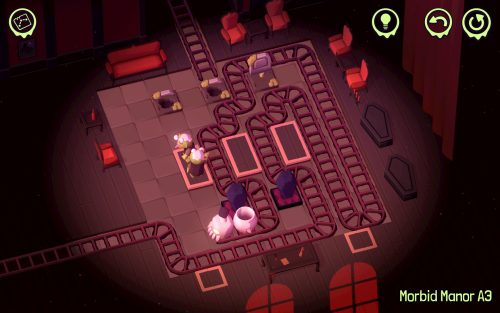
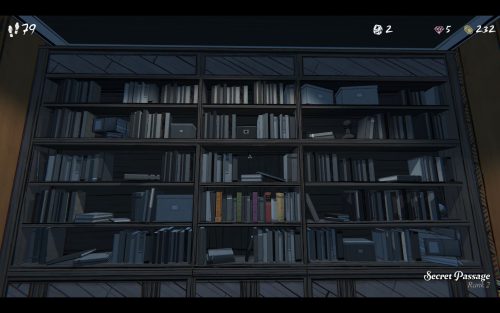
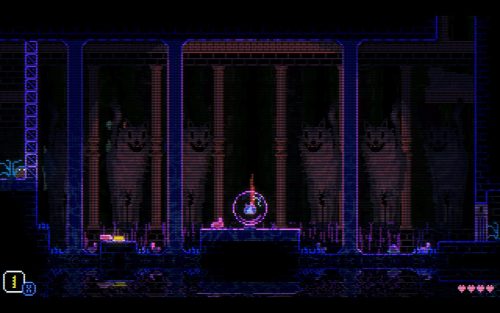
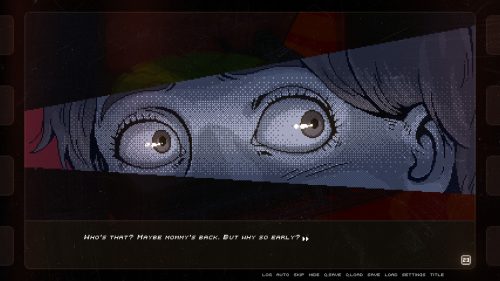
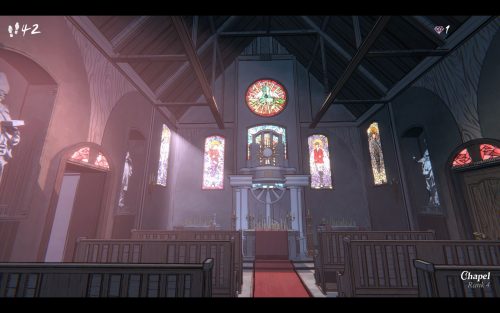
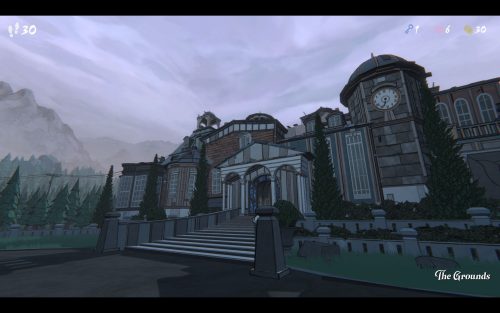
Wow, really touching. And it introduced me to this guy’s work that I’ve never played before.
Thanks, I really struggled with this one. I’ve wanted to write up Necromancer for a year – I had a version written last June – but “retro reviews” just seem a bit too “oh weren’t the old days so good” for me. Still I always wanted to talk about Bill Williams’ video game rise, fall and his eventual departure. I only got wind of Peter Olafson’s fantastic article on Williams 2 weeks ago and it’s been a mad panic trying to work out how to put it together.
I’ve not played any of his titles post-Atari and I’m certainly intrigued after reading about them. For example, Knights of the Crystallion takes place in a city built into the enormous skeleton of a vast, beached sea creature. I WANT THIS. His other Atari title, Alley Cat, is a lot more accessible (less hardcore) than Necromancer and it is very funny. Again – great sound effects, even down to simulated meows and “fight clouds” that you see in cartoons.
I hope now you’ve gone to the trouble of buying it off eBay it doesn’t disappoint =) I don’t know anyone who has ever finished Necromancer. (I have seen the end, but only through hacking the game to prevent strength dropping in the Vaults and Graveyard.)
Having a rifle through Bill’s book on Amazon, here’s a quick excerpt from the first page:
What an amazing piece, HM. Thanks for the article. It’s so important to remember some of the geniuses we lost tragically early.
A touching and pretty much excellent read. Thank you!
A chilling story, and a very interesting person. Thanks for sharing, HM.
Thanks all for your kind words, it’s great to hear this piece has gone down so well with everyone.
I also thought it was excellent.
Fantastic piece, HM. Personal stories like Bill Williams’ are important things to preserve. I’d like to think that, had you the opportunity, you would’ve done a great interview yourself.
Brilliant story of a brilliant man. It’s fascinating the stories and the people we forget, and we should never forget them.
The quote under the Vaults, to me, is the shining moment of his legacy, the thing we should remember from Bill Williams.
@Jonas – Thank you! And you have reminded me I need to send you an e-mail. Nice timing.
@BeamSplashX: I would absolutely have chased Bill W up, and to be honest, I was trying to track down family but I drew a blank and ran out of time. Still, Olafson’s article is absolutely everything you need to know about him, it’s really comprehensive.
@Tom: I’ll admit I was expecting this article in “Where We Came From” to be a lull before next week’s centrepiece, simply because it’s about a very old game and a programmer who has left no obvious footprint in contemporary gaming. It’s been humbling to learn that post-80s gamers think it’s important that his work is discussed.
Nicely done, Joel!
Fascinating life, with some really interesting parallels to the fictional book Skallagrigg by William Horwood. Thank you.
Welcome Barrie… Skallagrigg rings bells but I don’t think I’ve ever read it (or seen the TV adaptation) but having a look on Wikipedia I can see what you mean.
I really should try to wedge in reading books into my life again…
A fascinating read and I’ve got to say, from the videos, Necromancer looks excellent, and I really mean that. I love the way that your success has a cumulative effect on later levels and I too was impressed with the audio, particularly the music. It’s hard to imagine how you play this on a joystick though, presumably you hold the button in to switch to the wisp? I also like how each stage has different mechanics so you’ve effectively got three games linked together very cleverly. I need to check this out, somehow.
It’s a such a shame Bill passed away so young; who knows what he’d have gone on to do in today’s indie scene.
Gregg, next month: I can set you up with Necromancer no problem. Remind me! Only problem is you definitely need a controller for the PC. With the Xbox controller, every single button – including the one the directional thumbstick – will set off the joystick button on the emulator. Annoying as heck.
You’re right about the button though – the button is what flips you between wisp (button up) and wizard (button down). Except on the first stage, where you don’t move at all.
Really nice article – we’re playing Necromancer in the 8-bit Atari high score club and a player posted a link to this 🙂 If anyone wants to play this great game there’s various PC emulator links and beginners guide in the HSC link on my web site.
You guys have some serious massive Necromancer high scores in the thread over at Atari Age. Glad to hear there are people that can finish the game!